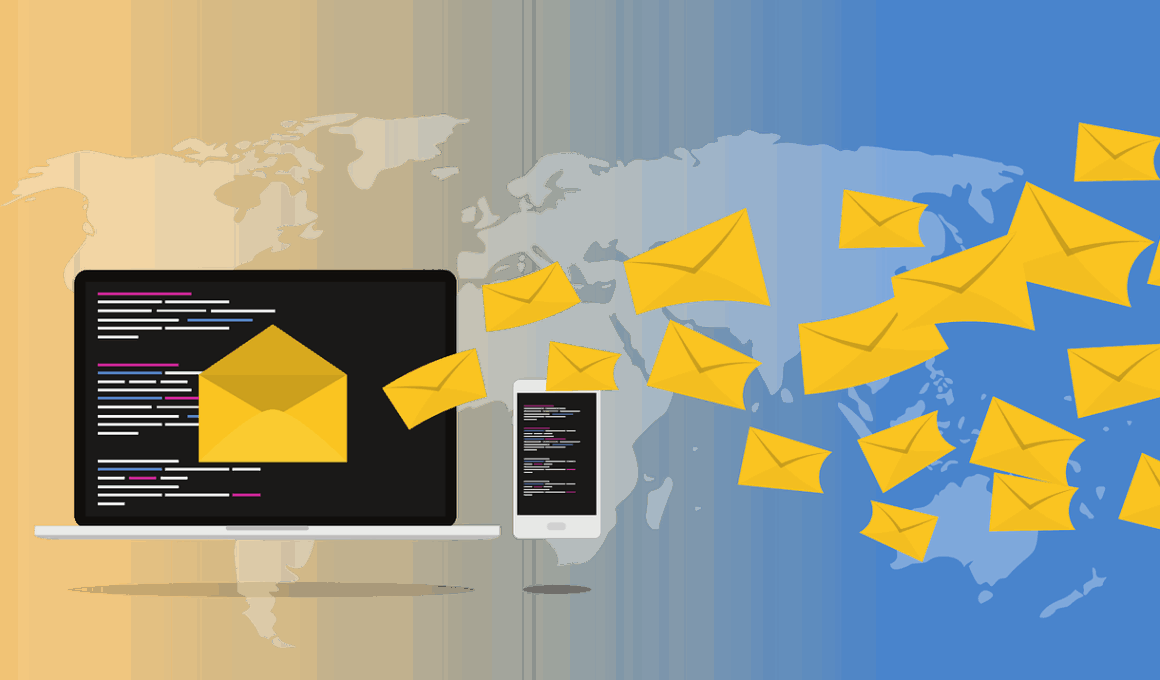Seasonal Trends and Their Impact on Email Marketing ROI
Email marketing is significantly affected by seasonal trends, which can influence not only open rates but also conversion rates and overall Return on Investment (ROI). Understanding these trends allows marketers to adapt their strategies effectively. For example, during holidays like Christmas, emails featuring promotional offers can experience remarkably higher open rates. This increased engagement often leads to improved sales figures throughout the holiday season. Similarly, back-to-school promotions can also see substantial spike in ROI given the right targeting strategies. Marketers should analyze previous campaigns to identify seasons where engagement was highest. Running A/B tests during various times of the year can provide insights into consumer behavior. Additionally, segmenting audiences according to their buying habits can greatly enhance the effectiveness of seasonal campaigns. Call-to-action buttons can be tailored to fit seasonal themes, enticing recipients to act promptly. Furthermore, incorporating customer feedback from previous campaigns allows businesses to refine their offerings seasonally. Tracking metrics like click-through rates during specific seasons can help optimize future marketing efforts, leading to enhanced returns.
Another critical aspect of seasonal email marketing is optimal timing. For instance, sending emails at times when consumers are most likely to engage can lead to higher ROI. Marketers must learn patterns related to when their target audience opens emails. Studies show that consumers are more inclined to check their emails during weekend evenings and Sunday afternoons. Scheduling emails accordingly can dramatically impact the effectiveness of a campaign. For special occasions, it’s wise to send emails a few days in advance to build anticipation, then follow up close to the event with last-minute deals. Monitoring engagement metrics after sending emails allows marketers to understand which timings lead to better performance. A well-timed reminder or limited-time offer can not only enhance open rates but also create urgency among consumers, driving them to make immediate purchases. Moreover, personalization plays a significant role during seasonal trends in email marketing. A personalized message catering to seasonal occasions resonates better with the audience, significantly impacting purchase decisions. By leveraging data analytics tools, marketers can craft tailored messages that align with the seasonal sentiments of their audience, improving ROI.
Additionally, it’s crucial to consider the visual elements of seasonal email campaigns. A well-designed email with seasonal aesthetics can capture attention immediately. Including thematic images, vibrant colors, and festive fonts can encourage recipients to engage with the content. For instance, visuals that evoke a sense of warmth during winter or excitement during summer can enhance the customer’s emotional response. Incorporating special offers into these designs can further boost conversions during key seasons. Furthermore, keeping mobile optimization in mind is critical; a significant portion of emails is opened on mobile devices. Ensuring that the email is visually appealing and easily navigable on various devices is a must. This often means testing designs across multiple platforms to maximize reach and effectiveness. Regularly analyzing customer interactions with emails helps to refine design choices and understand which elements have the most significant impact on ROI. Marketers can also benchmark best-performing campaigns against seasonal trends to establish a baseline for future efforts. Continuous learning and adaptation through performance metrics pave the way for more successful seasonal email marketing operations.
Leveraging Customer Behavior
Understanding customer behavior is essential to calculate the true ROI of seasonal email marketing campaigns. By examining behavioral data, marketers can deduce when their audience is most responsive. This might include tracking previous seasons’ purchase patterns and engagement trends. The integration of advanced analytics can help pinpoint the exact timing when to send seasonal emails for optimal engagement. Such insights can inform marketers about demographic differences in preferences, allowing for targeted approaches that yield higher returns. Moreover, segmentation based on past interactions can lead to increased personalization, resulting in higher engagement and conversion rates. By following interaction trends from prior campaigns, marketers can create strategically timed follow-up emails that resonate with their audience. The marketing automation tools available today enable timely delivery of content that matches customer behavior and seasonal relevance. Furthermore, utilizing customer feedback loops allows businesses to refine their messaging continuously. Adapting content and design according to previous successes enhances overall outcome effectiveness. Hence, marketers equipped with data-driven strategies at their disposal are better positioned to achieve enhanced ROI during critical seasonal periods.
Email marketing campaigns also benefit significantly from adopting omnichannel strategies to support seasonal promotions. By integrating email with other channels, such as social media and SMS, companies can create a unified experience for their customers. This approach not only amplifies visibility but also increases the opportunities for conversion. For instance, a coordinated campaign that uses targeted social media ads alongside email can create a wider reach and enhance engagement. Timely reminders across multiple platforms can evoke urgency and significantly increase conversion rates. Linking multiple channels also provides a richer understanding of customer behavior across different platforms. Each interaction can provide valuable data, which can further optimize future email marketing efforts. Marketers should also ensure consistent branding and messaging across all channels, reinforcing their seasonal theme. Furthermore, A/B testing various elements across channels can yield insights into what resonates best with the target audience. Thus, leveraging an omnichannel approach in seasonal email marketing can drastically improve ROI by driving more traffic and increasing overall engagement rates.
Finally, measuring the ROI of seasonal email marketing should involve a comprehensive approach. Marketers need to track actual sales generated from their email campaigns in addition to open and click rates. This involves setting clear key performance indicators (KPIs) that can provide insights into overall effectiveness. Assigning value to each conversion helps marketers understand the monetary benefits of their emailing effort. Regularly updating these metrics helps create a roadmap for future campaigns. It’s also useful to compare seasonal campaigns against non-seasonal ones to evaluate their relative performance. Annual reports on seasonal ROI can help marketers refine strategies for upcoming years, taking into account changing consumer trends. Continuous improvement through analysis encourages data-driven decision-making in future campaigns. Incorporating customer satisfaction and feedback into these evaluations can also provide qualitative insights that quantitative data alone cannot capture. By honing in on these metrics, marketers can ensure their efforts yield fruitful results during critical sales seasons.
Conclusion: Maximizing Seasonal ROI
In conclusion, seasonal trends significantly shape the effectiveness of email marketing ROI. Marketers who understand and adapt to these trends set themselves up for success. By optimizing content, timing, and strategies to fit seasonal themes, businesses can drive significantly higher engagement and conversion rates. Leveraging customer behavior data is essential, as it better informs segmentation and personalization, making campaigns more effective. The integration of omnichannel marketing further enhances the reach of email campaigns. Finally, consistently measuring ROI through specific KPIs allows for continuous improvement and future forecasting. Seasonal email marketing requires a systematic approach, but when executed well, it can yield outstanding returns. Such strategic adaptations to seasonal shifts ensure that businesses can meet their marketing goals effectively while maximizing their overall email marketing efforts.
To summarize the significance of seasonal trends in email marketing, businesses must embrace a strategic, data-driven approach. The effectiveness of seasonal campaigns can outweigh typical returns, especially with thoughtful planning and execution. Gaining insights from past performance and leveraging analytics can refine marketers’ understanding of customer behavior. When every campaign is intelligently crafted to suit seasonal sentiments, the results often exceed expectations. Investing in quality design, copywriting, and user experience creates memorable campaigns that resonate with audiences. Successful marketers must also stay flexible to adjust their strategies based on performance data and market conditions. Engaging content tailored to seasonal norms can effectively inspire customer loyalty and advocacy. Each season presents unique opportunities that marketers must seize to expand their reach. Overall, the profound impact of seasonal trends on email marketing ROI cannot be overstated, and businesses that adhere to this principle will likely see substantial financial returns from their seasonal marketing efforts.


